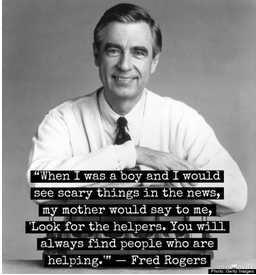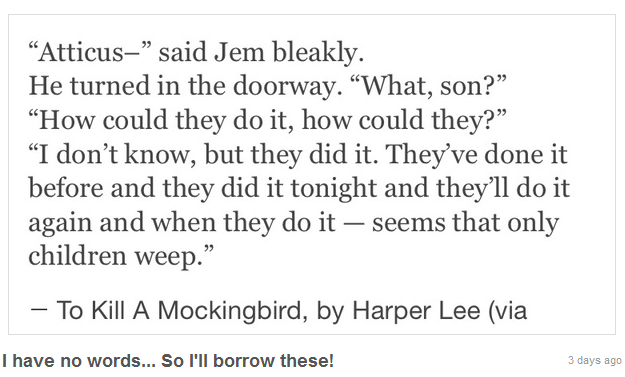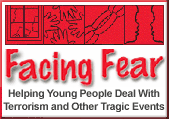Talking with Kids About Ukraine: Resource Roundup
March 10, 2022 Update-Russia’s Invasion of Ukraine As parents and educators grapple with urgent headlines, grisly visuals and untenable war crimes popping up on social media, one has to be especially mindful of this same level of saturation landing on children with equal horror.
I’ve ‘added’ to this initial post far too many times, from Sandy Hook to Ferguson and now, when we’re all experiencing layered lenses of disinformation and misinformation bumping up against verified sources, civilian casualty stories and relatable upending of lives in nanoseconds, it’s all the more important that news literacy and media literacy be at the forefront of all conversations.
With that in mind, the American Psychological Association has offered age appropriate strategies for discussing the war in Ukraine, as has PBS NewsHour and our friends at Connect Safely have put together a 1-minute CBS audio blurb and a solid post on Talking with Kids about the war, as well as action steps and concepts of what NOT to mention, given mental health traumas. MediaSmarts has a concise Tip Sheet, reminding to monitor, mediate and mitigate.
Many Americans also have personal ties with the Ukrainian people making it all the more daunting, and even when they don’t it can become personal (and regional) quickly, such as the playground buzz here in Silicon Valley, where a civilian Ukrainian family trying to flee turned out to be a SF Bay Area based tech worker bringing the war oceans away into nonstop local news. Be aware of upsetting images bombarding kids and help older teens deflect the doomscrolling, to perhaps use media to feel less helpless through actions steps instead.
 May 19, 2016 Update-Egypt Air With May being mental health month, and speculation underway as to air crash news being tragedy or terrorism, the “help kids feel safe” touchpoint is falling flat for many.
May 19, 2016 Update-Egypt Air With May being mental health month, and speculation underway as to air crash news being tragedy or terrorism, the “help kids feel safe” touchpoint is falling flat for many.
As talking tips proliferate, and no words/no news become instinctive for wee ones, resources like the National Association of School Psychologists (used after the Paris attacks) and generic health reminders from Mayo Clinic still serve as important resources for parents, educators, and youth alike.
Here’s my prior piece with a list of resources to reassure kids, including this excellent Children Now grid for discussing difficult topics by type, from disasters to drugs, death, and darkness beyond. Deep breath…
(Visual credit: Egypt Air: Thomas Ranner/AP File)
Nov. 27, 2014 Update-Ferguson I’m still rendered speechless trying to wrap my head around media literacy deconstruction of the Ferguson Decision with kids, because media pundits keep trotting out ‘talking tips’ as if this were a hurricane headline. (AP Grand Jury docs and eyebrow raising state vs federal precedent here) Whether it’s violence from a school shooting or a riot over race injustice and inequity, the pundit pablum “remind kids this is an isolated incident, remind kids that they’re safe” no longer applies. It’s misleading, counter-productive and patently false, so journalists, please don’t just recycle ‘one size fits all’ tips for critical thinking…
You can’t treat the Michael Brown case (or Trayvon Martin or any of the countless others) like a natural disaster. Yes, this may be another seismic ‘earthquake,’ but to ignore it with ‘weather channel’ style reporting of visual outcomes without deconstructing the fissures and chasms just beneath the surface does the kids a disservice.
So far The Root’s article: Do’s and Don’ts for Teaching About Ferguson has a resource roundup of helpful context (e.g. Teaching For Change.org’) that doesn’t parrot generically. I also liked Motherlode’s “Talking with White Kids About Racism” and NPR Newshour’s August piece “How to Talk to Students about Ferguson” pre-dating the verdict. The emotional power of NFL player and father of four Benjamin Watson’s Facebook post went viral and Levar Burton’s outtake from To Kill a Mockingbird (above) was the only thing I could ‘tweet’ before going dark for a digital detox to process it all. And yes, the Fred Rogers visual below still applies, but I’d do some serious cherry-picking with media reporting and keep an eye on the stagecrafting lens to ‘spot the spin’ with distinct points of view. (including my own editorializing here)
Wishing all families strength, stamina, and sensitivity…As folks gather for Thanksgiving today, please remember the empty chairs at these tables, and feel the powerfully painful poignancy without turning away. It will make you squirm, hurt, and grimace with grief…but that is the first step toward change.
 Sept. 4, 2014 Update-ISIS With propaganda proliferation using beheadings as “made for media” terrorism, it’s heartening to see tech firms stem the spread in social media, but equally important that we rapidly deploy our resources for parents and educators to be prepared for dialogue, reframing and deconstructing with a media literacy lens and sensitivity and savvy to wee ones intercepts of these media gaffes.
Sept. 4, 2014 Update-ISIS With propaganda proliferation using beheadings as “made for media” terrorism, it’s heartening to see tech firms stem the spread in social media, but equally important that we rapidly deploy our resources for parents and educators to be prepared for dialogue, reframing and deconstructing with a media literacy lens and sensitivity and savvy to wee ones intercepts of these media gaffes.
It’s incomprehensible that the commercialism of Channel One in K-5 schools is using sensationalized visuals to uncork this nightmare, with zero notice to parents in ‘what did you learn in school today’ mode. Please review all these resources below carefully and sound off about Channel One’s policies and practices pronto…
Original Post: April 15, 2013-Boston Marathon Feels like “talking to kids about the headline news” has surfaced for the umpteenth time in my media literacy links list in a ceaseless barrage of tragedy with today’s Boston Marathon explosions, (see links at the end on Sandy Hook, Dark Knight, quakes, tsunamis, 9-11 and more) and so I’ve decided it’s time to hush, light a candle, share several social media posts with a uniquely positive perspective, and just hand over the rest of the resources.
At the end, I’ve updated Shaping Youth’s prior comprehensive links list on dealing with headlines, tragedies and children’s media management compiling the best from various organizations and developmental experts to help guide through the squishy spots that can feel like quicksand…and offer a few relevant updates like finding age appropriate guidelines/phraseology for the Boston Marathon conversation should you choose to even open the topic at all.
My brief update is to add a social media lens spotlighting The recent New York Times‘ article studying the emerging positivity in social media threads being shared more, because today it certainly played out in truth.
What could this mean for journalism ‘angles’, when the mainstream media script of sensationalized speculation and stereotypes and gruesome ‘if it bleeds it leads’ journo gives way to the phenom of “good, going viral?”
Can a positive social media lens hold up amidst random incidents of violence and terror like today’s Boston Marathon, or will cynics paint such citizen journalism and social media sharing as Pollyanna reporting?
In my opinion hope and renewal should be in the media mix of factual hard-hitting news, it’s part of the story.
It’s no secret that I favor the view of Mr. Fred Rogers who reminds us all to “look for the helpers,” and then helps viewers himself with PBS talking points to deal with scary news. (more videos of the icon himself voicing these words from The Fred Rogers Center here)
Along these lines of seeding hope and inspiration for children and adults alike, I’m inspired by “13 Examples of People Being Awesome After the Attack on the Boston Marathon” which purposely calls out the heroes, and first-responders. There’s a strong implication that humanity could use some Windex to our distorted lens, not to put on ‘rose-colored’ glasses as much as view with a wide angle panorama offering a sharper, clearer picture of the true patriots here in this country on Patriot’s Day…to ensure the country is not eclipsed by terror and fear, but instead rallies with conviction.
Another article on HuffPo salutes heroic ‘first responders’ at the Boston Marathon in a photo essay, summing:
“It’s the people who broke down the marathon barriers to assist the injured seconds after the bombs went off. It’s the doctors who reportedly ran the marathon and then volunteered to help.It’s the runners who reportedly ran all the way to hospitals to donate blood…”
Another on Yahoo notes a spreadsheet posted fast offering housing, rooms, and an outpouring of help from the city’s residents in Boston.
And yet another article in The Atlantic magazine tells it like it is, (at least as I was raised in a counter-terrorism Naval Intelligence household) to “Keep Calm, Carry On” and not let freedoms cave into fear…
The author shares: “As the details about the bombings in Boston unfold, it’d be easy to be scared. It’d be easy to feel powerless and demand that our elected leaders do something — anything — to keep us safe. It’d be easy, but it’d be wrong….”
…”We need to be angry and empathize with the victims without being scared. Our fears would play right into the perpetrators’ hands — and magnify the power of their victory for whichever goals whatever group behind this, still to be uncovered, has. We don’t have to be scared, and we’re not powerless. We actually have all the power here, and there’s one thing we can do to render terrorism ineffective: Refuse to be terrorized.“
 Finally, along these same paths of positivity, the Patton Oswalt post going viral on Facebook, Twitter and now in The Atlantic magazine gave me goosebumps for being ‘spot on’ and saying a lot in a little status blurb.
Finally, along these same paths of positivity, the Patton Oswalt post going viral on Facebook, Twitter and now in The Atlantic magazine gave me goosebumps for being ‘spot on’ and saying a lot in a little status blurb.
It gives voice to steadfast conviction and positivity in an American variant of Winston Churchill’s strong surge of KBO–Keep Buggerin’ On.
And though I found myself asking who IS Patton Oswalt? (admit I didn’t have the vaguest clue, I had to Google him) I will now sit up and pay attention to his credits far beyond being the voice of Remy in Ratatouille…with solidarity and a salute to his sage words that soothed me.
His sentiment deserves to ‘go viral’ as it packs a mighty wallop:
“…I remember, when 9/11 went down, my reaction was, “Well, I’ve had it with humanity.” But I was wrong. I don’t know what’s going to be revealed to be behind all of this mayhem. One human insect or a poisonous mass of broken sociopaths.
But here’s what I DO know. If it’s one person or a HUNDRED people, that number is not even a fraction of a fraction of a fraction of a percent of the population on this planet. You watch the videos of the carnage and there are people running TOWARDS the destruction to help out. (Thanks FAKE Gallery founder and owner Paul Kozlowski for pointing this out to me).
This is a giant planet and we’re lucky to live on it but there are prices and penalties incurred for the daily miracle of existence. One of them is, every once in awhile, the wiring of a tiny sliver of the species gets snarled and they’re pointed towards darkness.
But the vast majority stands against that darkness and, like white blood cells attacking a virus, they dilute and weaken and eventually wash away the evil doers and, more importantly, the damage they wreak. This is beyond religion or creed or nation. We would not be here if humanity were inherently evil. We’d have eaten ourselves alive long ago.
So when you spot violence, or bigotry, or intolerance or fear or just garden-variety misogyny, hatred or ignorance, just look it in the eye and think, “The good outnumber you, and we always will.” —Patton Oswalt
I find that passage to be soul-stirring, gut-punching, fist-pumping positive validation on a day that could otherwise leave one limp as a rag doll…
I wish we didn’t have quite so many ‘teachable moments’ lately with children, but alas, we do. These are worthy media messages to share with kids…Mr. Rogers. Churchill. Oswalt. You? What will you share with your children?
“Every tomorrow has two handles. We can take hold of it by the handle of anxiety, or by the handle of faith. ~Author Unknown
Related Reading on Shaping Youth:
Talking to Kids About Headline News,Tough Topics & Terrorism
Sandy Hook Shooting: My Silence. Floundering in Social Media Darkness
Dark Knight: Resources to Reassure Kids from Media Massacres (Batman Tragedy)
Bin Laden’s Death, Media, and Kids: Teach Your Children Well (comprehensive list of ‘terrorism specific’ convos to quell fears w/kids)
Bringing Communities Together, Post 9-11 (MeetUp on 9-11-11)
Quaking Kids, Headline News: How Much is Too Much? (Japan)
The 411 on 9-11: What To Say to Kids About Headline News
Resource Roundup/Talking To Kids (Terrorism topics etc)
Virginia Tech Tragedy: Media Coping Tips
What Will Kids Learn About Dr. George Tiller…And From Who?
Role Modeling Resiliency: How Are Kids Coping Skills?
Mass Media Has A Role to Play in Curbing Violence (news)
SchoolLoop: Digital Voice Alert (Siren SoundOff: Media Call)
Media, Kids & Grief: Different Ages & Stages of Loss
Web Resources, Talking Tips For Kids Amidst Violent Headline News:
Short Form: Summary-Talking to Children After Tragedy (Boston Children’s Hospital)
Center on Media & Child Health: Research/News/Resources for Dealing w/Tragedy (CMCH Boston)
My Daughter Can’t Get To Sleep/Scary News Stories (blog post/Mediatrician/Dr. Michael Rich)
Should We Shield Kids After Boston Blasts? (blog post/Nancy G.; fndr-NewMoonGirls)
Mom & Dad, Are We Safe? (blog post/Dr. Robyn “they don’t just need to look for the helpers, they can become them”)
Harvard EdCast: Discussing Tragedy With Children (faculty/expert podcast 15-20min)
Children Now: Talking With Kids About the News Excellent specific talking tips on terrorism and random mass incidents (complete with role play) and a solid roundup of web link resources on terrorism/tragedies of various kinds
Talking with Kids about Headline News (PBS Parents)
Explaining the News to our Kids (Common Sense Media)
NIMH Helping Children & Adolescents Cope With Violence and Disasters (Nat’l Inst of Mental Health)
Expert Tips on Talking to Kids About the Dark Knight Incident (health blog/Dallas News)
Create Your Own Media Headline (How media is made/interactive)
Teach Kids News (Grades 2-6)
Rebooting The News (great links/roundup of School Library Journal edu tools too!)
The News Literacy Project (How to Know What to Believe–digital literacy)
MIT/Reconstructing: A classroom exercise; reflections on humanity and media after tragedy (deconstructing media w/analysis of sound/news footage, etc.)
Talking With Kids About Tough Subjects (Before everyone else does)
American Red Cross/Facing Fear: Free Downloadable Curriculum for K-12
PBS Teachers: Media Literacy Sites & Programs Great list of links, shows, topics, guides and more
Media Literacy Clearinghouse Frank Baker has links out the wazoo on multiple areas of specialization as well as allied orgs (see our blogroll sidebar)
How to Talk to Your Child About the News Simple overview/KidsHealth primer
Kids Health: Primer/How Kids Perceive the News
Media Literacy 101: How to Detect Fear-Mongering
Children and Learning/Violence: (eHow)
Impact of Media Violence/Tips: Common Sense Media
Helping Children Regain Their Emotional Safety After a Tragedy (KidPower)
Trying to Make Sense of Tragedy: Why the Sandy Hook Shooting Is So Painful For All of Us
Artists Bring Healing After Recent Tragedy: Unify/Sandy Hook
Educational Leadership: When the World is a Dangerous Place
12 Facts About Guns and Mass Shootings in the United States (Washington Post)
How to Talk With Kids about Tragedies Like the Aurora, CO Shooting
Brady Campaign: (contextual framing) Mass Shootings/USA Since 2005
Visual Credits: KBO/Churchill-Emsey21-Deviant Art Boston Marathon Graphic: Facebook “Boston Fun Facts” page, Mr. Rogers helpers quote; Getty Images










Amy, thanks for keeping it “positive”.
Not an easy thing given sidewinders of late, but impt nonetheless to see in surround sound and view media critically whether we choose to ‘shield, deflect, or jump in the deep dive convos’ where kids are concerned…So much depends on ages/stages, but fact vs fiction imperative to discern regardless…